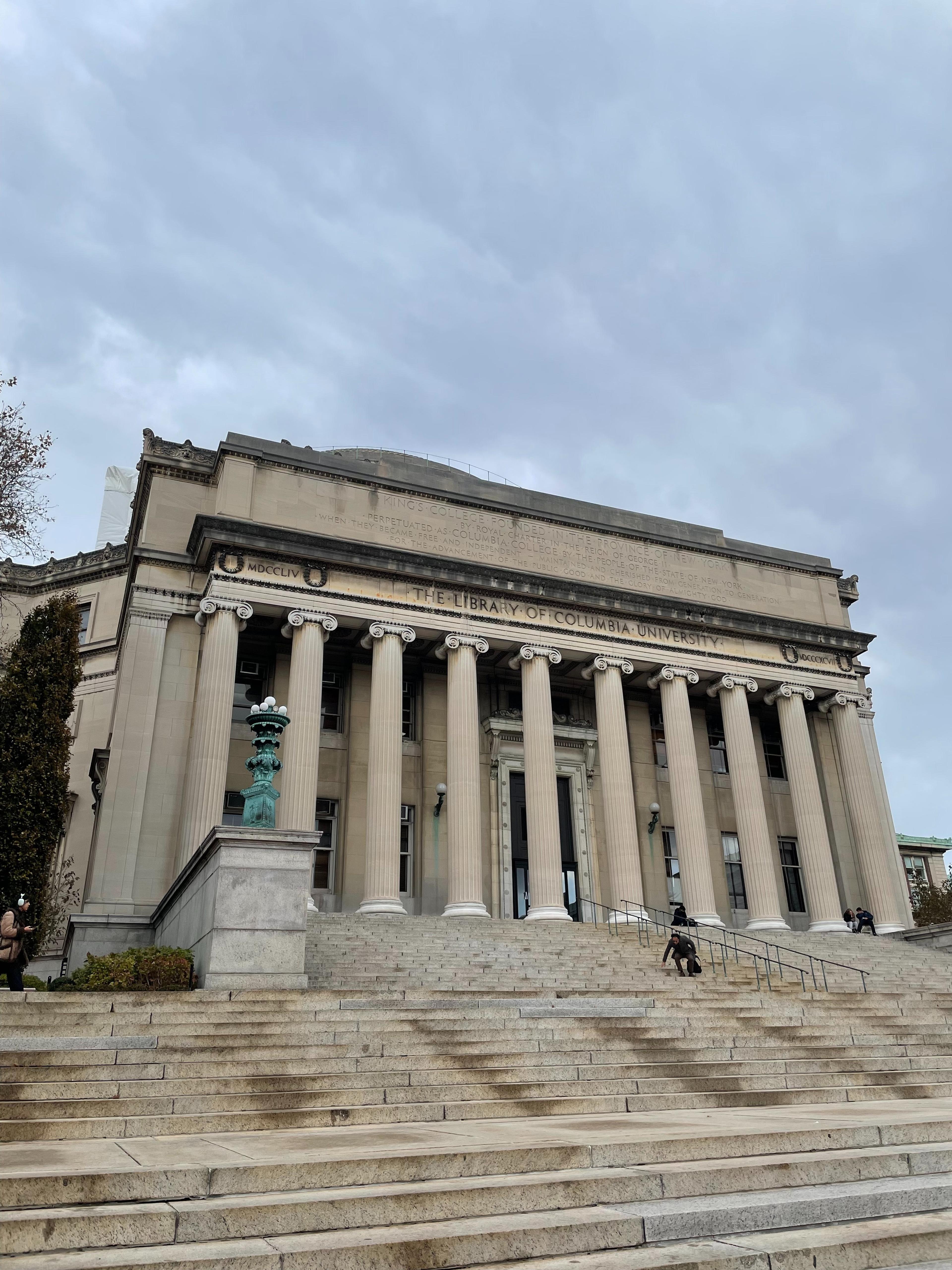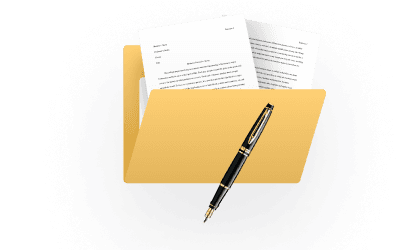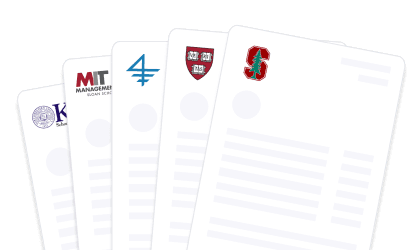
Table of Contents
Free Event

Featuring Melanie E.
How to Get a Head Start on Your MBA Application
Starting Wednesday, April 16
10:00 PM UTC · 60 minutes

Featuring Melanie E.
Applying to the business school at Columbia University this cycle? This article covers Columbia Business School’s updated MBA essay prompt for the Philips Pathway for Inclusive Leadership and provides expert insights to help you tackle it with confidence and stand out in the application process.
Read our full guide to CBS here: Columbia Business School — MBA Program & Application Overview (2024)
Columbia MBA Essay – PPIL Prompt
The Phillips Pathway for Inclusive Leadership (PPIL) is a co-curricular program designed to ensure that every CBS student develops the skills to become an ethical and inclusive leader. Through the PPIL co-curricular program, students attend programming focused on five essential diversity, equity, and inclusion skills: Creating an Inclusive Environment, Mitigating Bias and Prejudice, Managing Intercultural Dialogue, Addressing Systemic Inequity, and Understanding Identity and Perspective-taking.
“Tell us about a time when you were challenged around one of these five skills. Describe the situation, the actions you took, and the outcome. (250 words)”

Understanding the Prompt
Let’s begin by carefully analyzing the essay prompt to grasp its core message and what the school is seeking in prospective candidates. Although the question involves PPIL, applicants don’t necessarily have to know a ton about the MBA program or even want to join it to answer the question effectively. Rather, they need to show that the candidate thoroughly encompasses these values and is actively embodying them on a day-to-day basis.
The challenge here: applicants only get 250 words to answer the question. Thus, Columbia Business School is looking for ONE specific example of ONE of these skills. They are not looking for a list of everything an applicant has done, or a general statement of their belief system. Applicants will need to be concise and deliberate about their writing for this Columbia MBA essay question.
It is also important to realize that Columbia Business School evidently emphasizes diversity and inclusion in its student body. Make sure ALL aspects of the application represent these values, not solely this essay.
How to Get Started
The first step of the prewriting process is to take time to reflect on own experiences with diversity and inclusion. Consider moments in life or career encounters on diversity-related challenges, working in diverse teams, or actively fostering an inclusive environment. Reflect on how these experiences have shaped one’s perspectives and values.
Next, highlight the unique perspective applicants bring to the table concerning diversity and inclusion. Whether it's related to one’s cultural background, personal journey, professional experiences, or even a post-MBA professional goal, think about how one’s perspective enriches the collaborative learning environment and can contribute to Columbia University's diverse, equitable, and inclusive community.
Finally, pinpoint one moment that aligns with one of the skills Columbia College would like to see showcased (Creating an Inclusive Environment, Mitigating Bias and Prejudice, Managing Intercultural Dialogue, Addressing Systemic Inequity, and Understanding Identity and Perspective Taking). This moment should be meaningful, clearly showing the impact provided, and allow the AdCom to understand that one’s commitment to diversity and inclusion is something that will bring with to the business school and career. Attending Columbia University is no easy feat but writing a stellar essay is the best way to get started.

The Writing Process
- Structure the Essay: Create a clear and concise essay structure. It should begin with an engaging introduction that sets the stage for the story, followed by the main body paragraphs where the situation, actions, and outcome are detailed. It should end with a thoughtful conclusion that emphasizes the importance of the experience and its impact on the journey.
- Describe the Situation: In the first part of the essay, a brief but vivid description of the challenge faced should be provided. The context, the people involved, and the emotions or thoughts experienced should be explained.
- Actions Taken: In the next part, elaborate on the actions taken to address the challenge. Highlight any leadership skills, personal qualities, strategies, or initiatives implemented to promote inclusivity and overcome obstacles.
- Outcome and Reflection: Describe the outcome of one’s actions and the impact they had on the situation and those involved. Reflect on learning experience and how it influenced one’s understanding of inclusive leadership skills.
- Connect to PPIL: Make explicit connections to the specific PPIL skill addressed in the essay. Explain how one’s experience aligns with the program's values and how it has contributed to growth as an ethical and inclusive leader.
- Be Concise and Stay Within the Word Limit: Stick to the 250-word limit and ensure every sentence contributes meaningfully to the narrative. Use clear and impactful language to convey the message effectively.
- Revise and Edit: Once the essay is written, it should be revised for clarity, coherence, and grammar. Any unnecessary details should be eliminated, ensuring the response is succinct yet powerful.
- Seek Feedback: Share the essay with trusted peers, mentors, or experienced MBA coaches to gather feedback and gain insights into its effectiveness. Make adjustments accordingly.
Watch: How to Write a Standout MBA Application Essay

Common Mistakes
When writing Columbia MBA essays related to diversity and inclusion, it’s crucial to demonstrate a thoughtful and nuanced approach. Common mistakes that people make in these types of essays include:
Only going surface level. Some applicants tend to provide a surface-level discussion of diversity without delving into the complexities of the topic. Avoid using buzzwords or generic statements without providing concrete examples or personal experiences.
Tokenism. Some candidates may fall into the trap of tokenism by discussing diversity and inclusion solely to check a box or fulfill an application requirement. The admissions committee can easily spot insincerity, so it's important to show genuine interest and commitment to these values.
Not doing enough self-reflection. Demonstrating a lack of self-awareness regarding one's own biases or privilege can be detrimental. Admissions officers value candidates who recognize their limitations and show a willingness to learn and grow.
Lack of the “so, what?”. Discussing diversity and inclusion without outlining how it will contribute to creating an inclusive environment is insufficient. Provide concrete examples of having promoted diversity and inclusion in the past and plans to do so in the future.
Not tying diversity to leadership. MBA programs seek future leaders who can navigate diverse and global environments. Show how one’s understanding of diversity and inclusion will influence one’s leadership style and decision-making.
After learning the way to master Columbia Business School’s PPIL essay prompt, check out these resources to help put together an all-around stellar application:
- A Guide to the Columbia Business School Essays (2023-2024)
- Columbia Business School — MBA Program & Application Overview (2023)
- Ace Your Columbia Business School MBA Interview: Expert Tips and Sample Questions
- Columbia Deferred Enrollment Program
- The Ultimate M7 MBA Essay Guide
- A Coach’s Guide to MBA Letters of Recommendation

FAQs
How hard is it to get into Columbia Business School MBA?
- Columbia Business School is highly selective, with an acceptance rate of 15.2%. This means that out of 100 applications received, only 15 applicants are admitted. The admissions process is competitive, and applicants must present a well-rounded profile that aligns with the school's values and mission.
What is the acceptance rate for Columbia MBA Business School?
- The acceptance rate for Columbia is just over 22%. It is important to consider the acceptance rate in the context of the student profile of those who are admitted. For example, the average GMAT score is 730.
How prestigious is Columbia MBA?
- Columbia University is ranked No. 12 (tie) out of 124 in Best Business Schools. Schools were assessed on their performance across a set of widely accepted indicators of excellence.
How long does it take for Columbia MBA to respond?
- For all terms of entry, our goal is either to invite applicants for an interview or deny admission within six weeks of a completed application being received.
What are the odds of getting into the Columbia MBA interview?
- However, like other M7 schools, Columbia typically sends interview invitations to about twice the number of candidates they intend to admit, so if you get to interview stage, your chances of admissions have shot up to around one in two.
How many letters of recommendation for Columbia MBA?
- How Many Letters of Recommendation Does Columbia Business School Require? CBS requires one letter of recommendation. For reapplicants, they recommend that you submit a new recommendation as part of your reapplication material.
How do you approach a Columbia essay?
- Ask questions, take notes, and dig to find specific people, organizations, and experiences that excite you. Don't dig too deep into majors or classes just yet; you'll have an opportunity to write about your academic interest in a little bit, so for now, focus on the Columbia experience as a whole.
How many essays does Colombia require?
- Columbia requires students to submit three short supplemental essays of 200 words or less and answer three additional questions with lists.


















